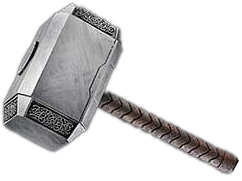Subsection2.1.1Hom and \(\otimes\) for modules
Definition2.1.1Tensor product of \(R\)-modules
Let \(M,N\) be \(R\)-modules.
Then the tensor product \(M\otimes N\) is the \(R\)-modules generated by all pairs \(m\otimes n\) for \(m\in M,\,n\in N\) modulo the relations:
-
\((m_1+m_2)\otimes (n_1 + n_2) = \sum m_i \otimes n_j.\)
-
\(r(m\otimes n) = (rm)\otimes n = m\otimes (rn).\)
We have the following properties of this definition:
- \((M_1\oplus M_2) \otimes (N_1\oplus N_2) = \bigoplus M_i\otimes N_j\).
- \(M\otimes N \cong N \otimes M\).
- \(M\otimes R = M\)
Example2.1.2Tensor products
- \(R^n \otimes R^m \cong R^{mn}\).
- Letting \(R = \ZZ\), \( \QQ \otimes \ZZ/a\cong 0\).
- \(\ZZ/a\otimes\ZZ/b\cong \ZZ/(a,b)\).
If \(f\colon M_1 \to M_2\) and \(g\colon N_1 \to N_2\) then there is a map
\begin{align*}
f\otimes g \colon M_1 &\otimes N_1 \to M_2 \otimes N_2,\\
m&\otimes n \mapsto f(m) \otimes g(n).
\end{align*}
Example2.1.3
If \( f\colon R^n \to R^m\) is given by multiplication by \(A\in \operatorname{Mat}_{n\times m}(R)\) then \(f\otimes 1_M\colon M^n \to M^m\) is given by multiplication by \(A\).
Definition2.1.4Hom
\[\Hom(M, N) = \{f\colon M\to N : f \text{ is } R \text{-linear}\}\]
is an \(R\)-module, via \((f + rg)(m) = f(m) + rg(m)\).
From this definition we see that
- \(\Hom(\bigoplus M_i, \bigoplus N_j)\cong \bigoplus_{i,j} \Hom(M_i, N_j)\).
- \(\Hom(R, M) \cong M\).
Note however that we do not have \(\Hom(M,N) = \Hom(N,M)\) as for example \(\Hom(\ZZ/2,\ZZ) = 0\) but \(\Hom(\ZZ, \ZZ/2) = \ZZ/2\).
Definition2.1.5Dual module
Given an \(R\)-module \(M\) the dual of \(M\) is \(M^* = \Hom(M,R)\).
Now if we have \(f\colon M \to N\) we get a map
\[f^*\colon \Hom(N, O) \to \Hom(M, O)\]
given by \(f^*g = g\circ f\).
Example2.1.6
If \(f\colon R^n \to R^m\) is multiplication by \(A\) then
\[f^*\colon \Hom(R^m , O) \cong O^m \to \Hom(R^n, O) \cong O^n\]
is multiplication by \(A^\top\).
